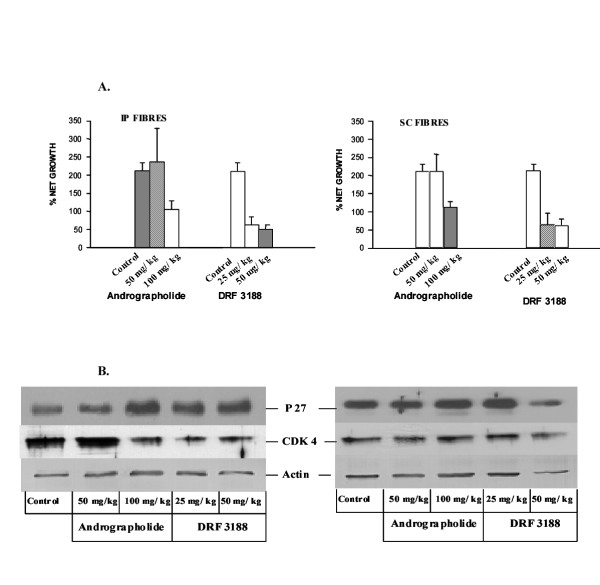Figure 4.

Mechanism of anti-cancer activity of andrographolide and DRF 3188 – In vivo studies. A. MTT assay of the cells placed in the hollow fibres and implanted either in the peritoneum (IP) or sub-cutaneous (SC) region of Swiss Albino Mice (SAM). Andrographolide does not have any effect on the cells at the lower dose of 50 mg/kg. However, a 50% cell kill is seen at the higher dose of 100 mg/kg. DRF 3188 treatment results in the death of 75% of cells after treatment with low or high dose of the compound. This effect is observed irrespective of whether the cells are present in the peritoneum or subcutaneous region. B. Western Blot analysis of the MCF 7 cells placed in the hollow fibre, after treatment for four days. At the low dose of 50 mg/kg andrographolide has no effect on the cells placed in the peritoneum or subcutaneous layer. At the high dose of 100 mg/kg of andrographolide an induction of p27 is seen. Similarly treatment with low or high dose of the semi synthetic analog DRF 3188 leads to an induction of p27. Under similar conditions cells placed in the peritoneum exhibit a reduction in the levels of Cdk 4. However, the cells placed in the subcutaneous region do not exhibit this effect. The western blot with Actin was done as the internal loading control.
